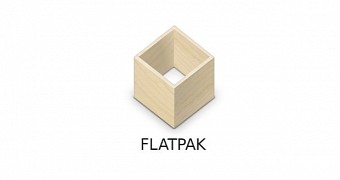Softpedia has been informed by GNOME Project's Allan Day about the official unveiling and general availability of the Flatpak project for various GNU/Linux operating systems.
This is not the first time we talk about Flatpak, which some of you already know is an independent, cross-distro framework that allows the use of various desktop applications on multiple Linux kernel-based operating systems. Our readers might also be aware that Flatpak was previously dubbed XDG-App.
Flatpak emerged as the solution of choice for GNU/Linux and open-source application developers who were looking for a way to distribute their software projects more easily across multiple desktops and operating systems, without having to spend hours or even days building packages for each major Linux distro.
"Application developers on Linux have always been prevented from having a direct relationship with their users. With Flatpak we're aiming to change that, so developers know exactly what their users are getting. With this launch we are making that goal a reality," said Alexander Larsson, lead developer, Flatpak.
Designed with security in mind
According to the Flatpak devs, several major open-source projects are already distributing their apps in the .flatpak format for supporting OSes. Among these, we can mention LibreOffice, InkScape, GIMP, MyPaint, and Darktable. Being developed as part of the GNOME Project, several apps from the GNOME Stack are also packaged as a Flatpak.
At the beginning of the month, we told you that the upcoming major LibreOffice 5.2 office suite release was available as a Flatpak for common GNU/Linux distributions, including Arch Linux, Debian, Ubuntu, Fedora, Mageia, and Gentoo, and it was all possible thanks to a group of skilled LibreOffice developers. The GNOME Software graphical package manager is also supporting the Flatpak format.
Best of all, it appears that Flatpak has been designed from the ground up with security in mind, providing users with a sandboxed technology where the applications packaged in this format will only have access to what's inside the Flatpak container and a few of the host libraries and OS interfaces.
"The next major Flatpak release will be all about sandboxing,” says Alexander Larsson in the official press announcement for Flatpak. "Application authors will see a much more complete set of interfaces for interacting with the operating system from within a sandbox."
To get started with Flatpak, please visit the official website, where you'll find installation instructions for the GNU/Linux operating systems mentioned above. Is your distribution not supported? Don't worry, Flatpak might be adopted by other distributions as well, but that will remain to be seen.

 14 DAY TRIAL //
14 DAY TRIAL //